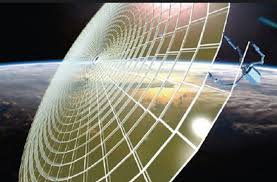
Breaking News
 Polar Vortex Threat Sends US NatGas Futs To Highest Level Since 2022
Polar Vortex Threat Sends US NatGas Futs To Highest Level Since 2022
 Trump Makes 160 Truth Social Posts in Four Hours. Is that Enough?
Trump Makes 160 Truth Social Posts in Four Hours. Is that Enough?
 Dear MAGA Supporters, Are You Engaging With Robot Accounts On X?
Dear MAGA Supporters, Are You Engaging With Robot Accounts On X?
 Electricity Costs Surge 6.7 Percent from Year Ago, Residential Consumers Hammered
Electricity Costs Surge 6.7 Percent from Year Ago, Residential Consumers Hammered
Top Tech News
 Build a Greenhouse HEATER that Lasts 10-15 DAYS!
Build a Greenhouse HEATER that Lasts 10-15 DAYS!
 Look at the genius idea he came up with using this tank that nobody wanted
Look at the genius idea he came up with using this tank that nobody wanted
 Latest Comet 3I Atlas Anomolies Like the Impossible 600,000 Mile Long Sunward Tail
Latest Comet 3I Atlas Anomolies Like the Impossible 600,000 Mile Long Sunward Tail
 Tesla Just Opened Its Biggest Supercharger Station Ever--And It's Powered By Solar And Batteries
Tesla Just Opened Its Biggest Supercharger Station Ever--And It's Powered By Solar And Batteries
 Your body already knows how to regrow limbs. We just haven't figured out how to turn it on yet.
Your body already knows how to regrow limbs. We just haven't figured out how to turn it on yet.
 We've wiretapped the gut-brain hotline to decode signals driving disease
We've wiretapped the gut-brain hotline to decode signals driving disease
 3D-printable concrete alternative hardens in three days, not four weeks
3D-printable concrete alternative hardens in three days, not four weeks
 Could satellite-beaming planes and airships make SpaceX's Starlink obsolete?
Could satellite-beaming planes and airships make SpaceX's Starlink obsolete?
If We Master Building in Space Then the Solar System Will Be Wide Open

A lot of the focus is on the massive speed, distance, and power challenges.
We Are Crippled Because We Cannot Really Build in Space
The most technically feasible ways to start making much faster progress to making travel around the solar system routine and fast and then to build a foundation for interstellar flight is to build large and light space structures.
Fully reusable rockets are the game changer that SpaceX is creating now. The next steps are robotic construction capabilities and megawatt and gigawatt power. No matter what the large power source is we have to build large in space to radiate the heat from the large power systems.
Going 400 Times Faster to Get to 10% of the Speed of Light
To convey the challenge of reaching 10% lightspeed, consider the improvements between the 1977 Voyager and the 2011 Juno missions. In roughly three decades there was a four-fold increase in speed. At that rate, it would take another 130 years to reach 10% lightspeed. The gap between achieved speeds and the goal of 0.1c is a factor of 400 (Juno achieved 0.00025c). The technical challenge is to increase spacecraft ?V by at least 400 times more than presently possible with chemical rockets.

 First totally synthetic human brain model has been realized
First totally synthetic human brain model has been realized Mach-23 potato gun to shoot satellites into space
Mach-23 potato gun to shoot satellites into space

